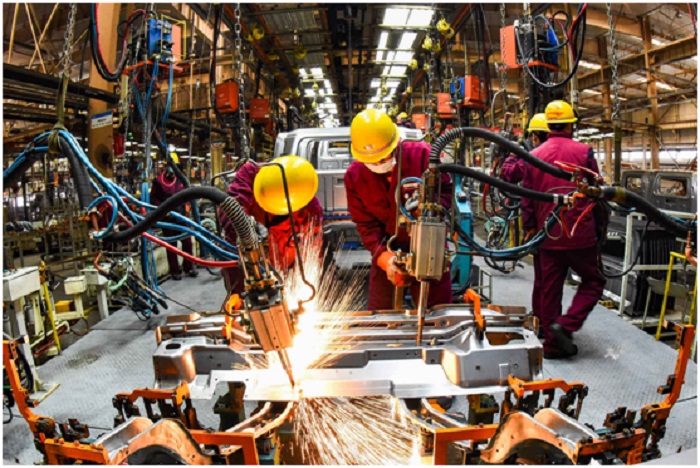



The Two Sessions of 2021 are in the spotlight. At the centenary of the Communist Party of China, how will China kickstart the 14th Five-Year Plan and what policies will be introduced on COVID-19 response, economic development, and reform and innovation. These are topics that are followed closely at home and abroad.
On the morning of 5 March, Chinese Premier Li Keqiang delivered the Report on the Work of the Government at the Fourth Session of the 13th National People’s Congress. The main projected targets for development this year are as follows: GDP growth of over 6 per cent; over 11 million new urban jobs; a surveyed urban unemployment rate of around 5.5 per cent; CPI increase of around 3 per cent; steady increases in both the volume and quality of imports and exports; a basic equilibrium in the balance of payments; steady growth in personal income; a further improvement in the environment; a drop of around 3 per cent in energy consumption per unit of GDP; a continued reduction in the discharge of major pollutants; and grain output of over 650 million metric tons. These targets have taken account of such factors as economic recovery, base figures and the need for sound and sustained growth. This will help maintain the continuity, stability and sustainability of macro policies, advance reform, encourage innovation and promote high-quality development. China will take a multi-pronged approach to pursue high-quality development.
China will spare no effort to contain the virus and at the same time drive economic and social development. Despite some progress made, the global fight against COVID-19 has not yet come to an end. Domestically, China will further improve containment routines, strengthen emergency response capacity, and prevent clusters of infection and transmission caused by sporadic cases. The development of vaccines and the free vaccine program will be steadily advanced for more science-based and targeted COVID-19 response. Internationally, China will set up joint response mechanisms with more countries and open more “fast tracks” and “green lanes” to facilitate the flow of people and goods to contribute to global economic recovery.
China will prioritize reform and innovation to boost development with greater vitality. Reform holds the key to addressing development challenges. Be it state capital and SOE, market-based allocation of production factors or government functions, China’s reform is picking up pace across the board. Through reform, China will foster a world-class, market-oriented business environment governed by a sound legal framework, reduce operating costs, and facilitate the common development of enterprises under diverse forms of ownership. Such efforts will further energize the market and serve China’s overall development.
Innovation is the primary driving force for development. In WIPO’s Global Innovation Index, China’s ranking moved up to the 14th in 2020 from the 29th in 2015. In the course of COVID-19 response, new business forms such as telemedicine, online learning, sharing platforms, collaboration systems and live streaming commerce have burgeoned. China will accelerate the application of scientific and technological breakthroughs and information sharing and ensure an average annual growth of more than 7 per cent in R&D spending during the 14th Five-Year Plan period. China will nurture high-tech businesses and industrial clusters supported by innovation demonstration areas and high-tech zones. China will strengthen science and technology to provide strategic underpinning for the country’s development and strive to become a front-runner among innovative countries, a long-range goal China has set for itself.
China will further unleash its market potential to foster a new development paradigm. To pursue high-quality development, China will develop a scientific analysis of this new development stage, act on the new development philosophy, and move faster to build the new development paradigm. Committed to expanding domestic demand as a strategic move, China will step up efforts to develop the Internet economy, encourage the consumption of physical goods, explore new models of services consumption, and scale up support to manufacturers. China will further grow its domestic market and keep unleashing the driving force from within to build a new development paradigm with domestic circulation as the mainstay and domestic and international circulations reinforcing each other.
This new development paradigm promises more development opportunities and greater market space for all countries. Pursuing all-round opening-up at a higher level, China will further shorten the negative list for foreign investment and implement the catalog of industries where foreign investment is encouraged. China will continue to vigorously develop pilot free trade zones, conclude high-standard FTAs, and promote high-quality Belt and Road cooperation to establish a new system of open economy of higher standards. This will put China in a better position to tap into domestic and global markets and resources, generate impetus for its own economic growth and contribute to global economic recovery. Like an express train with greater driving force, China welcomes all countries to get on board and move toward a future of shared prosperity.
At a historic stage of realizing the first centenary goal and moving on toward the second one, China is well poised to make sound progress at the new starting point. As Chinese President Xi Jinping said in his 2021 New Year Address, “The road ahead is long and arduous, and we must forge ahead.” We can expect continued efforts by China to open a new chapter in its high-quality development.
Source: People’s Daily Online


The Humanitarian Service Diamond Awards has.
A Chinese Company, Inner Galaxy Steel.


The Programme Coordinator, Regulatory, Compliance and.


A Non-Governmental Organization (NGO), Committee for.
The Trustfund Pensions Limited has chided.


The House of Representatives Committee on.
The China General Chamber of Commerce.


Senator Chuka Utazi who represented Enugu.


An Abuja based Legal Practitioner, Ugochukwu.


The African business community in Yiwu,.
Leave a Comment